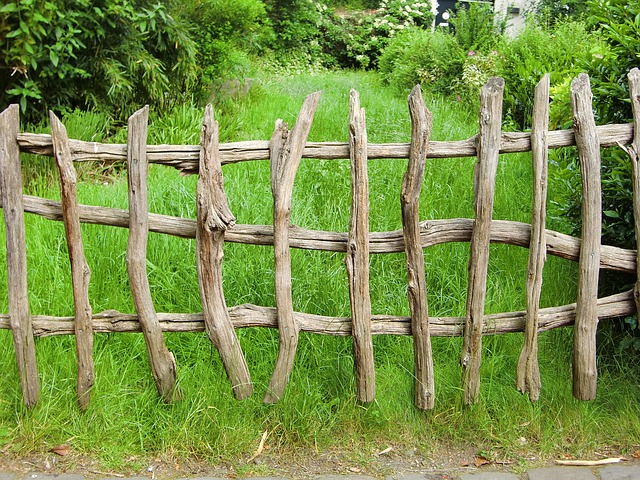Privacy Fence Installation in New Bedford, MA: A Comprehensive Guide
In the quest for a secure and private outdoor space, installing a privacy fence offers an appealing solution. This guide delves into the intricacies of privacy fences, highlighting their benefits and diverse types. We explore why New Bedford, MA is an ideal location for installation, providing insights into custom design planning and the step-by-step installation process. Additionally, we offer post-installation care tips and navigate local regulations and permits to ensure a smooth experience.
- Understanding Privacy Fences: Benefits and Types
- Why Choose New Bedford for Installation?
- Planning Your Custom Fence Design
- The Installation Process Step-by-Step
- Post-Installation Care and Maintenance Tips
- Local Regulations and Permits: What You Need to Know
Understanding Privacy Fences: Benefits and Types
Privacy fences serve as more than just barriers; they are a statement about your outdoor space, offering a range of benefits that cater to both aesthetic and functional needs. In New Bedford, MA, where outdoor living is cherished, installing a privacy fence can transform your yard into a peaceful sanctuary, shielding it from prying eyes and unwanted noise from neighbors.
These fences come in various types, each with unique characteristics. Wooden options, for instance, provide a classic appeal and can be tailored to complement your home’s architecture. Vinyl fences are low-maintenance alternatives, known for their durability and vibrant colors. Chain link fences, on the other hand, offer both security and privacy while being budget-friendly. Each type has its advantages, allowing homeowners to choose based on personal preference, climate considerations, and desired level of privacy.
Why Choose New Bedford for Installation?
New Bedford, MA, offers an ideal environment for privacy fence installation for several reasons. Firstly, the city’s mild climate allows for year-round construction without extreme weather interruptions. This ensures that your fence can be installed and completed efficiently. Secondly, New Bedford’s diverse landscape provides a range of options for fence designs, from classic wood to modern vinyl, catering to various aesthetic preferences.
Additionally, the local community in New Bedford values privacy and security, making it an excellent market for privacy fence services. The city’s mix of residential neighborhoods and commercial areas creates a demand for well-designed, secure fences that can enhance property values while ensuring peace of mind for residents.
Planning Your Custom Fence Design
When planning your custom fence design in New Bedford, MA, envision the look and functionality you desire most. Consider factors like material – wood, vinyl, or iron – each offering unique aesthetics and maintenance requirements. Think about height, style (privacy, aesthetic, or security), and any additional features like gates or panels with intricate designs. A well-planned design ensures your privacy fence not only enhances your outdoor space but also serves its intended purpose effectively.
Before installation begins, prepare your property by clearing the area and marking out the fence’s layout. This step is crucial for ensuring precise measurements and a seamless fit. Collaborate closely with your fencing contractor to translate your vision into reality, incorporating any specific needs or challenges unique to your New Bedford property.
The Installation Process Step-by-Step
The installation process for a privacy fence in New Bedford, MA, typically involves several well-defined steps to ensure a secure and aesthetically pleasing finish. The journey begins with meticulous planning and preparation. This includes measuring the designated area accurately, ensuring all necessary permits are acquired, and choosing the right materials suited to the local climate and terrain. Site preparation is crucial; any obstacles like trees or utility lines must be accounted for, and the ground should be cleared and leveled accordingly.
Once ready, the fence structure is erected, often using a combination of posts, rails, and panels. The posts are strategically placed, firmly anchored into the ground, and joined with brackets to create a robust framework. Railings are then attached, providing support and a base for the privacy panels. These panels can be made from various materials, each offering distinct levels of privacy and durability. Once installed, the fence is securely fastened, ensuring it stands strong against potential weather conditions or accidental impacts.
Post-Installation Care and Maintenance Tips
After your privacy fence is installed, regular care and maintenance will ensure its longevity and appearance. Start by cleaning the fence at least once a month using a soft brush or sponge to remove dirt and debris. Avoid using harsh chemicals as they may damage the material. Keep an eye out for any loose panels or hardware and replace them promptly to prevent issues.
Regular inspections are also crucial. Check for signs of rot, rust, or other forms of damage, especially around gates and posts. Applying a fresh coat of paint or sealant every few years can help protect against the elements and maintain the fence’s aesthetic appeal. Always refer to the manufacturer’s guidelines for specific care instructions tailored to your privacy fence material.
Local Regulations and Permits: What You Need to Know
Before installing a privacy fence in New Bedford, MA, it’s crucial to understand local regulations and permit requirements. These guidelines are put in place to maintain neighborhood aesthetics, preserve natural landscapes, and ensure safety standards. Check with the local building department or town clerk’s office for specific rules regarding fence height, materials, and placement. Some areas may have restrictions on certain types of fencing, especially near public right-of-ways or historic districts.
Obtaining the necessary permits is a critical step in the process. Depending on your location and the type of fence you plan to install, you might need building permits, zoning permits, or other specific authorizations. Take the time to review the local code book or contact relevant authorities to gather this information. Failure to comply with these regulations can result in delays, fines, or even the requirement to remove the installed fence.
